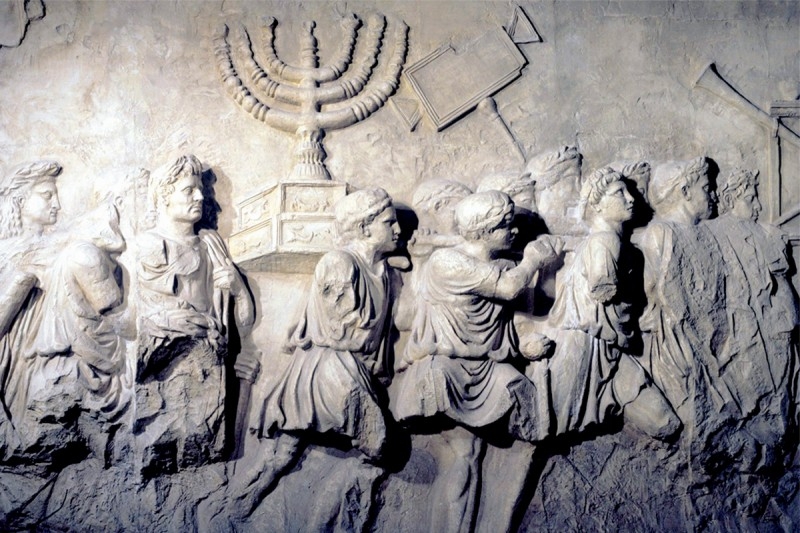At that time the officials of Nebuchadnezzar, king of Babylon, attacked Jerusalem, and the city came under siege. Nebuchadnezzar, king of Babylon, himself arrived at the city while his servants were besieging it. Then Jehoiachin, king of Judah, together with his mother, his ministers, officers, and functionaries, surrendered to the king of Babylon, who, in the eighth year of his reign, took him captive. And he carried off all the treasures of the temple of the LORD and those of the palace, and broke up all the gold utensils that Solomon, king of Israel, had provided in the temple of the LORD, as the LORD had foretold. He deported all Jerusalem: all the officers and men of the army, ten thousand in number, and all the craftsmen and smiths. None were left among the people of the land except the poor. (2 Kgs 24:10-14)
I remember my first pilgrimage to Rome. I went to the Roman Forum and was captivated by the Arch of Titus which was erected after another sacking of Jerusalem, this time by the Roman army. The Arch has depictions of the triumphal parade award to Titus with soldiers carrying the vessels of the Jerusalem Temple to be deposited in the treasury of the Templo of Jupiter in Rome. A Jewish man was also viewing the Arch and turned and said to me in English: “This place is sacred to my people.” And I answered him, “It is also sacred to my people.”




